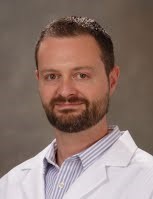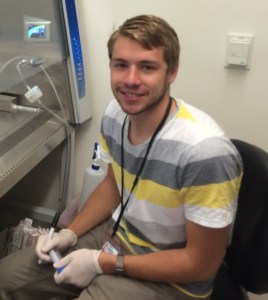Biomedical research can generate big data and it takes big brains running big computers to make any sense of it. For University of Colorado Cancer Center investigators, the solution has been to enlist the bioinformatics expertise provided through the Biostatistics and Bioinformatics Shared Resource (BBSR). Led by Director James Costello, PhD, and Manager/Data Analyst Andrew Goodspeed, PhD, the team of five experts at the BBSR shakes and sifts numbers until meaning emerges. But despite BBSR expertise in data analysis, the researchers generating the data in the first place are often in the best position to define “meaning,” and sending data away for analysis can leave these experts one step removed from their own work. Also, there is only so much shaking and sifting the BBSR can do, leading to a bottleneck in the workflow of research: Data is being generated across the Anschutz Medical Campus faster than investigators can make sense of it.
Now an award from the CU School of Medicine Academic Enrichment Fund seeks to address this bottleneck problem. The award will allow the BBSR to develop and disseminate what Goodspeed calls a “user-friendly, visual, interactive platform” of data analysis tools to not only help CU Cancer Center investigators answer some of their own big-data questions, but enable investigators across the Anschutz Medical Campus to do the same.
“The analysis tools that we have developed and will continue to build upon allow investigators to take a deep dive into their own data. They’re the expert in their field of research – having that expertise analyzing the data is invaluable,” Goodspeed says.
“It’s like the saying about teaching someone to fish,” says Costello. “In this case, it’s as if the person that knows everything about fish doesn’t actually know how to catch fish. And the idea is that if we give the fish expert the tools and hence the capacity to fish, they’ll do a much better job at making sense of their haul than the person who can fish but doesn’t know what they’re pulling out of the ocean.”
These tools, which will be accessible online through the BBSR, will allow investigators to upload their data and then visualize it with intuitive, point-and-click interfaces.
“People look at fancy figures in published papers and they may not appreciate the amount of time and effort it takes to generate those figures. There’s a ton of work that goes into data analysis to get to one interpretable visualization. It requires a huge amount of time. One of the goals of the tools we will be developing, with the support from the University, is to provide researchers with intuitive and useful visualizations of their data – plots that are near publication-ready,” Costello says.
The goal, say Goodspeed and Costello, is to help researchers independently answers about 80 percent of their basic questions, with more sophisticated questions continuing to be addressed in collaboration with the team of BBSR researchers.
“Across the whole workflow of research from basic science to clinical application, the bottleneck we see on campus is the analysis of these large datasets – not just in cancer, but across all disease types that generate large datasets. Anyone that generates data that you can’t fit in an excel spreadsheet, that you can’t quickly peruse, those datasets require more sophisticated analysis and visualization. Our goal is to empower researchers to be more closely involved in asking and answering some of their own big-data questions, while at the same time removing or at least reducing this bottleneck across the entire campus,” Costello says.





.png)